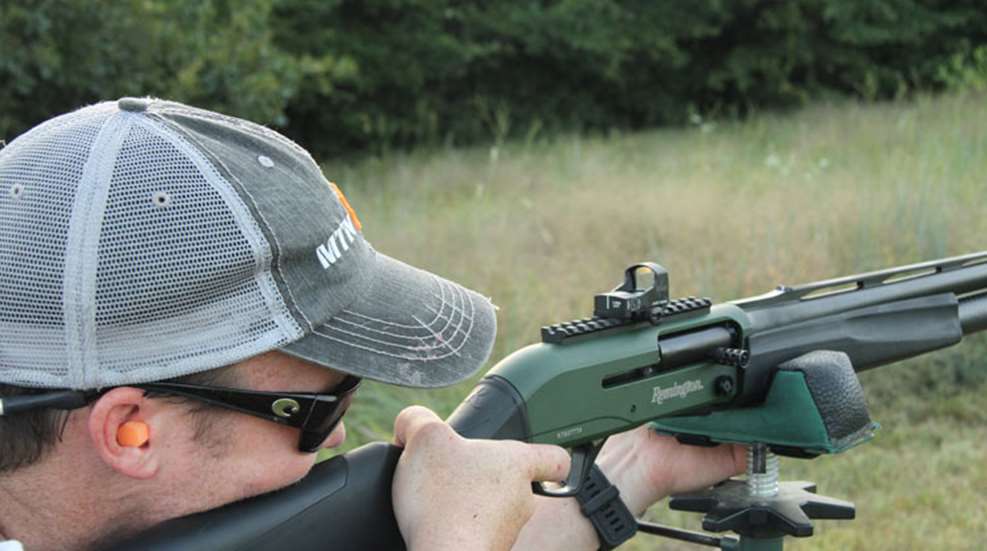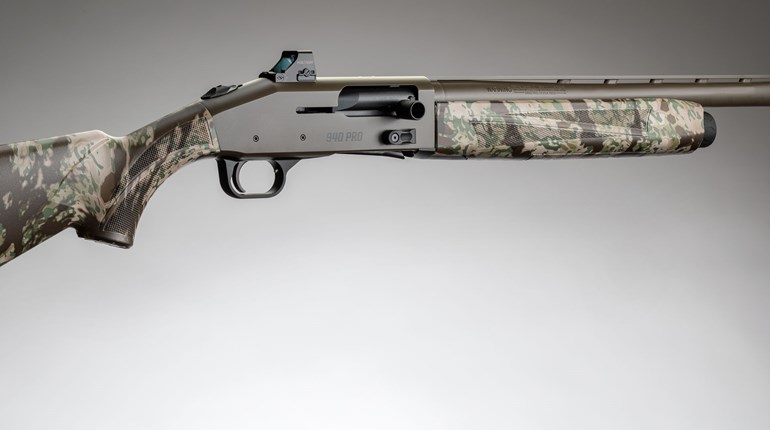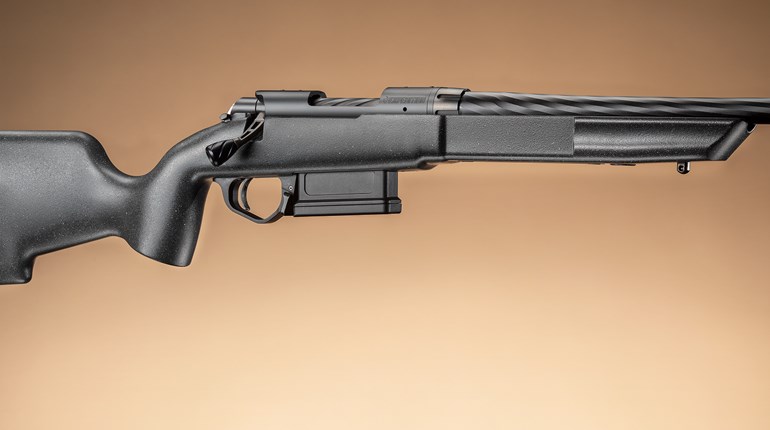
You’re a mean one, Mr. Flinch,
You really are a heel,
You're as cuddly as a cactus,
You're as charming as an eel,
Mr. Flinch!
When I was eight years old Santa brought me three things on Christmas day. The first gift was my grandpa’s ancient Stevens 20-gauge—you know, the single-shot with a hump-shaped stock and a hellacious kick. The second was an inch-long scar on my right cheek that required seven stitches after the shotgun’s hammer stuck into my face the first time I fired it on Christmas morning. And the resulting third gift I received was one of the world’s worst cases of flinch. For the longest time I couldn’t hit a barn door at 10 paces with a cylinder choke! Only after routine drilling by my father, humility, discipline and desire did I finally conquer it. Oh, you’re a mean one, Mr. Flinch!
Now, as an NRA shooting instructor, I find flinching to be very common among shooters, and it’s not easy to overcome. Most times the shooter doesn’t even realize he or she is doing it. If you suspect you or someone you know is afflicted by the flinch grinch, here’s how to tell and a few things you can do to exorcise it.
Expose Mr. Flinch
One of the toughest aspects of flinch is proving it exists. And even tougher than convincing a friend or student that they might be flinching can be convincing yourself that you are! It’s difficult because few people like to admit they are either afraid or not in complete control of their minds. The gun’s loud bang and violent recoil can make it truly difficult to tell what instigated the movement of the gun—the blast of the shell or the shooter himself. But if the shooter is routinely missing targets that other shooters hit with the same gun, there’s a good chance flinch is the culprit.
Flinch happens for two main reasons: 1. Physical fear of being hurt by the recoil of the gun; and 2. Mental anxiety caused by wishing to hit the target but anticipating the trigger squeeze, bang and recoil of the gun.
If you suspect flinch, study the shooter carefully while he or she is shooting. Over several shots, study the shooter’s eyes, trigger finger and the muzzle of the gun. If you notice any of the following hints—and the shooter misses the target—it’s probably due to flinch.
- The person noticeably yanks the trigger very fast and hard.
- The shooter clamps their eyes shut just before the gun goes off.
- The muzzle of the gun visibly moves before the gun goes off.
- The shooter has a very difficult time recording tight groups or even hitting the target—when other people shoot the gun just fine.
- The shooter is not enjoying shooting the gun and is quick to stop shooting.
But even if you believe the shooter is flinching, it may be tough to convince him that he is. So, with his or her permission, take the following action: While on the firing line, ask the shooter to hand you the gun and for the shooter to close his eyes. Act like you are loading a shell, but do not load it. Hand the gun back to the shooter and ask them to shoot normally, and to concentrate hard on hitting the target. Take a step back and use your phone to video the event.
If the shooter is flinching, and he or she believes the gun to be loaded, the shooter’s flinch will be easily seen and felt by the shooter when the gun lurches as the trigger is pulled—despite the gun not actually going off. If the shooter still doesn’t believe it, show them the video.
Once the shooter knows he’s flinching and desires to correct it, there are several things that can be done.
Make sure the gun fits properly. While guns with stocks that are too long so that the shooter cannot get a proper cheek weld are not ideal, guns with stocks that are too short can be even worse. Choose a small, easy recoiling caliber in a gun that fits. Finally, make sure the shooter is wearing great ear protection.
Ensure the shooting technique is proper. The gun must be pulled tightly into the shoulder pocket with the cheek planted firmly on the stock. There must be no space between the buttpad and the shoulder and the cheek and the stock. Meanwhile, the forend hand should pull the gun back into the shoulder and prevent the muzzle from climbing. Most importantly, the trigger pull itself must be sound; it should be gently squeezed—not jerked—until the gun goes off.
For newer shooters, explain what causes recoil and why proper technique is a must. Then explain that the gun will not hurt them if proper technique is followed. Dryfire the gun yourself to show what proper form looks like, and that the barrel and body should not move as the gun goes “click” on an empty chamber. Then actually fire the gun to show it will hit where it is aimed if the shooter does not flinch.
Instruct the student to diligently dry fire. Before shooting, have them take a deep breath. Then talk him through the trigger squeeze by saying, calmly, “Squeeze, squeeze, squeeze …” until the gun goes off and no movement of the shooter or gun can be seen. Soon the shooter will understand what remaining steady through the shot sequence feels like. Then, every six times or so, have him fire a live round. Then repeat.
If the shooter is ready and agrees to test him or herself, conduct a blind loading drill. Few people like to be embarrassed, and sometimes the fear of being embarrassed can overcome the physical fear of being kicked. Ask the shooter to close his or her eyes while you either load a shell or do not. Then have them shoot the gun. If the shooter flinches, he will realize it and generally will try very hard not to flinch again. While this drill does create some anxiety and therefore is not fun, it can help shooters who strongly desire to correct their flinch. Realize, however, that it could negatively impact shooters who are naturally timid, reluctant or who do not yet have good technique. So use it with discretion.
If you suspect yourself of flinching, you can perform this drill on yourself by asking a friend to either load or not load the gun for you as you look away.
You're a vile one, Mr. Flinch!
You have termites in your smile.
You have all the tender sweetness
Of a seasick crocodile,
Mr. Flinch!
Flinching is a terrible monster, but after several months of repetition, embarrassment, missed targets and desire to get better, it can be defeated!







































